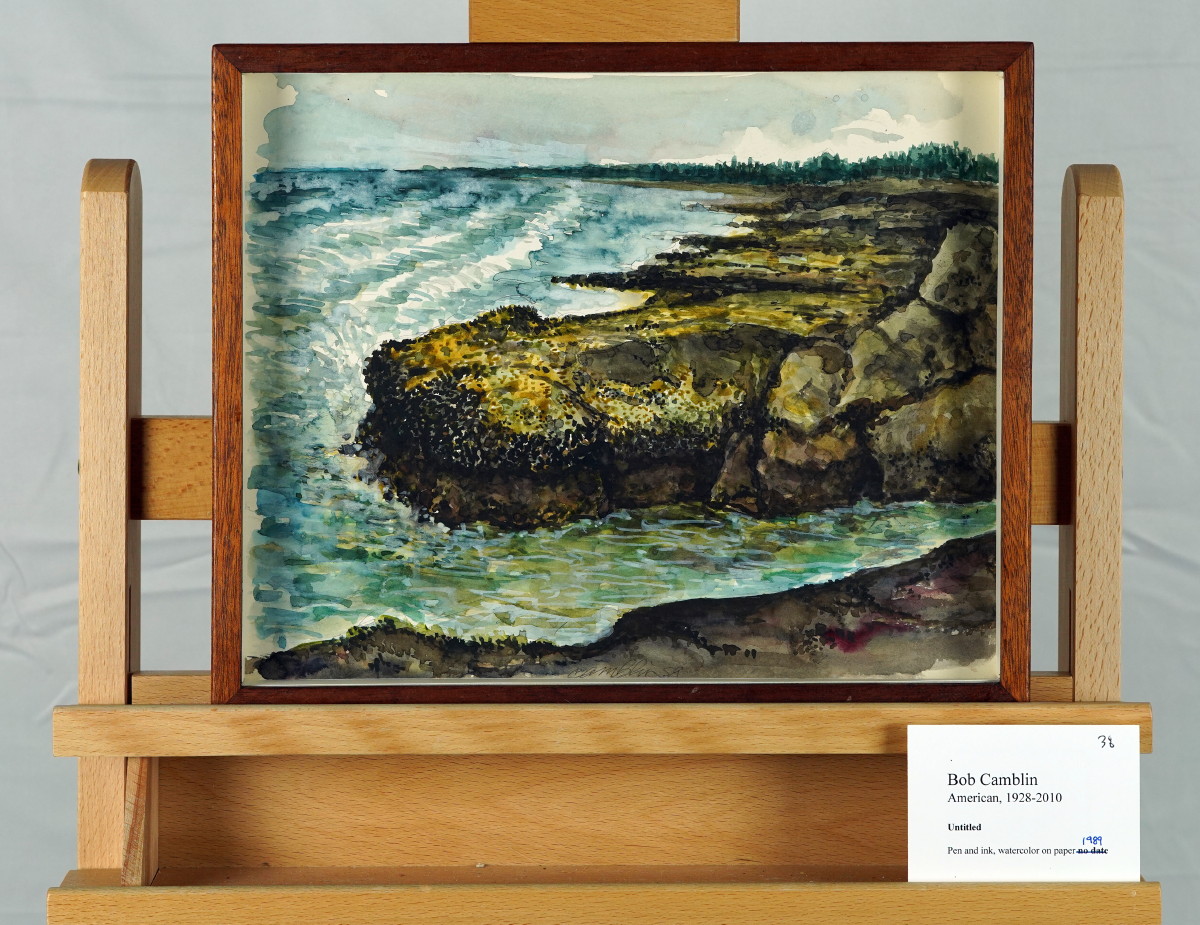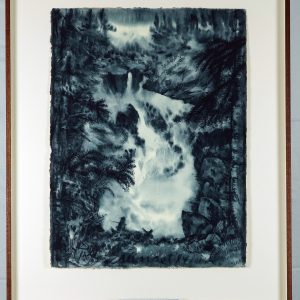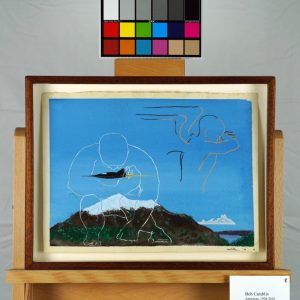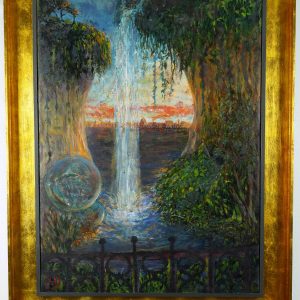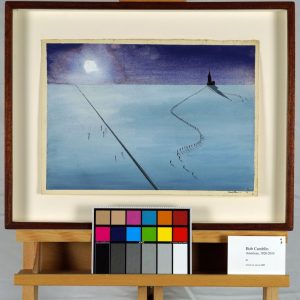Description
Untitled #38, 1989Pencil/watercolor on Arches
Signed
11.75 x 14.25 in. (frame)
original, includes certificate of authenticity from ArtTrust
This watercolor “Untitled 38” depicts a rugged coastal scene where the land meets the sea. The rocky outcrop in the foreground juts out into the water like an alligator, covered in earthy tones and speckled with plant life and mosses. Waves gently lap against the rocks, and the horizon line shows a dense forest, adding depth and distance to the composition. The use of watercolors lends a fluidity and transparency to the water, capturing its movement and the reflections on the surface.
In Zen philosophy, landscapes often symbolize the eternal flow of life and nature. This painting’s rocky coast juxtaposed with the ocean represents the dynamic interplay between stillness (rocks) and movement (water). The waves suggest the impermanence of all things, as the ocean continuously reshapes the shore. This image evokes a contemplative mood, reminding the viewer to find peace within life’s ebb and flow, embracing both the rough and the calm moments.
In terms of I Ching symbolism, this scene may relate to Hexagram 48, “The Well,” which signifies renewal, depth, and sustenance. The ocean serves as an unending source, akin to the well’s water, continuously refreshing the shore. The rocky outcrop may represent the fixed aspects of one’s life, while the waves suggest adaptability and the capacity to refresh one’s approach amid changing circumstances.
Combining the Zen and I Ching readings, the painting conveys the harmony between stability and transformation. The enduring rocks and ever-changing water echo the balance needed in life—being grounded yet open to change. It speaks to a journey of self-discovery, where embracing the present moment leads to an appreciation of life’s depth and diversity.
Watercolor landscapes have a long tradition, often associated with the Romantic era’s focus on nature’s sublime beauty. The style here, with its loose brushwork and transparency, echoes the works of 19th-century artists like J.M.W. Turner, who utilized watercolors to capture the atmospheric qualities of light and water. The artist’s choice to depict a rugged coast instead of an idyllic scene could also hint at 20th-century tendencies toward realism and capturing the raw, unpolished aspects of nature. The painting’s blend of impressionistic technique and realistic elements bridges historical styles while maintaining a unique narrative quality.
*Shipping cost will vary, please inquire at sales@camblingallery.com before purchasing.
Currently ships from Oregon, USA
Member of artnet? Apply for a discount! Inquire about intergallery and permanent loans for museums.
“Untitled #38” was featured in his Yes Retrospective.
Reproductions of this drawing are available in multiple sizes!
Click here to use our high-resolution viewer!
This artwork is available with a non-fungible token to ensure traceability and transparency of provenance.
The royalty factor – Unlike traditional artworks, such as paintings, mosaics, statues, and the like, NFTs can be programmed to provide royalties to you every time the painting (and token) is sold and resold – for eternity. That mind-bending Camblin you sold could be worth millions one day and provide income for your great-great-great grandkids!
Anti-forgery – The central idea underpinning NFTs is that they are built on the blockchain, which is meant to offer advanced security. Think of it like an un-erasable and un-avoidable copyright.
Easy authentication – Another compelling aspect of NFT art and NFTs in general is the ability to quickly and easily authenticate items, as the record of ownership is scrupulously kept on the blockchain.
